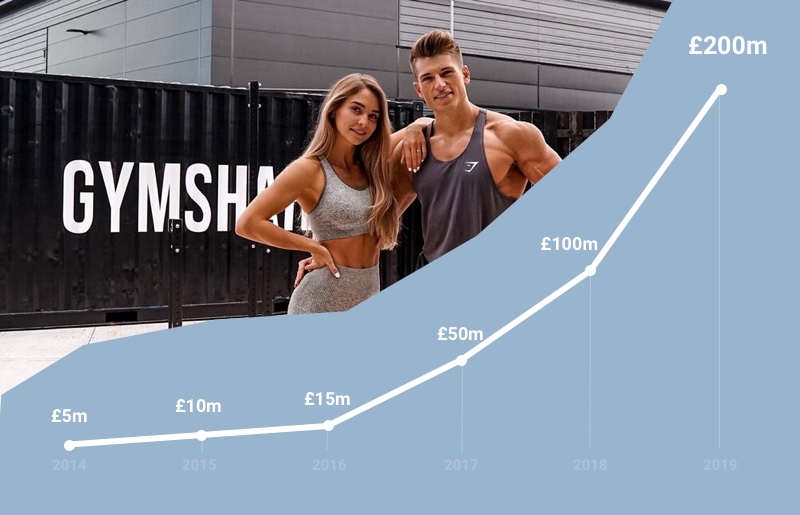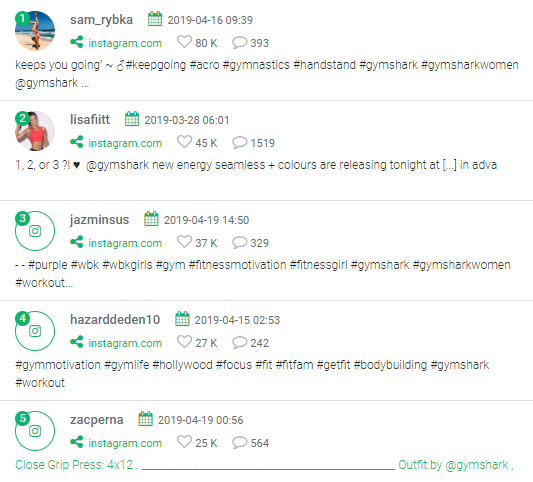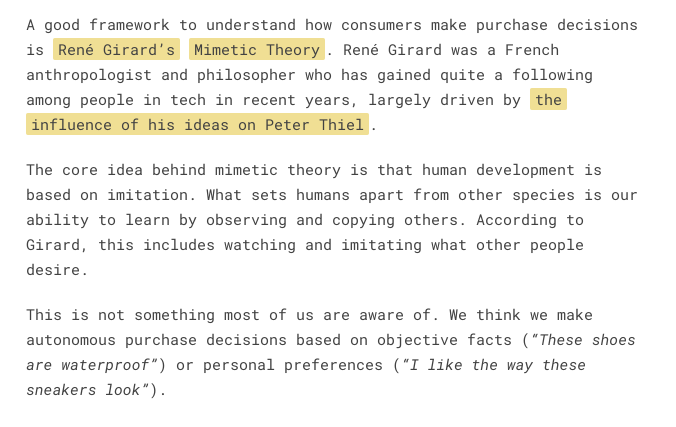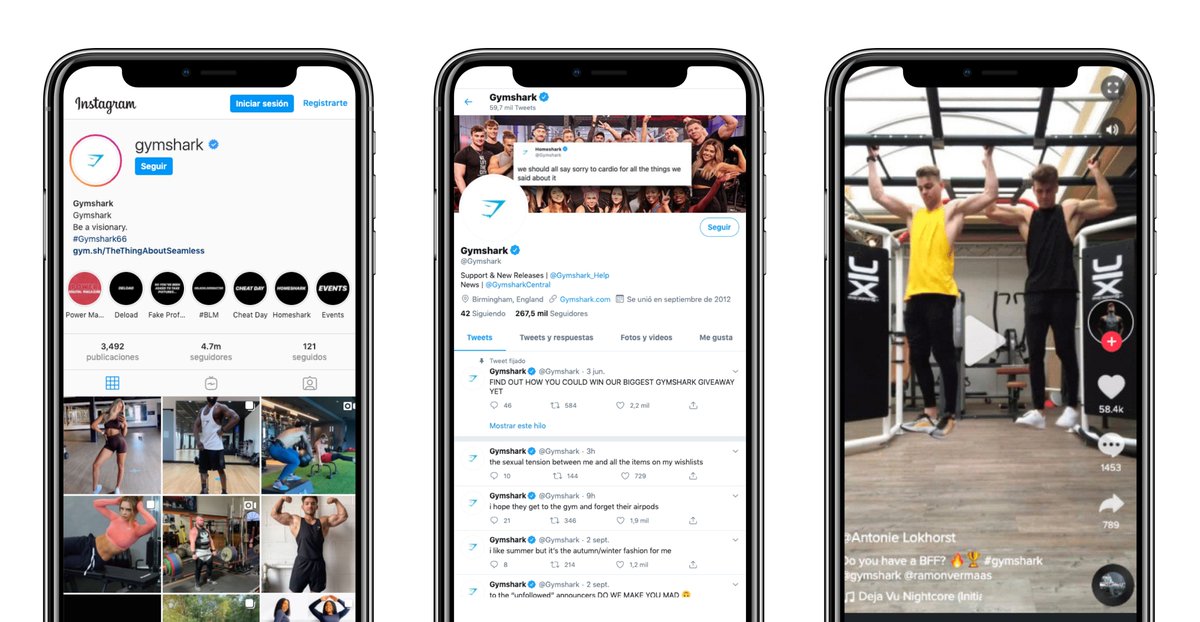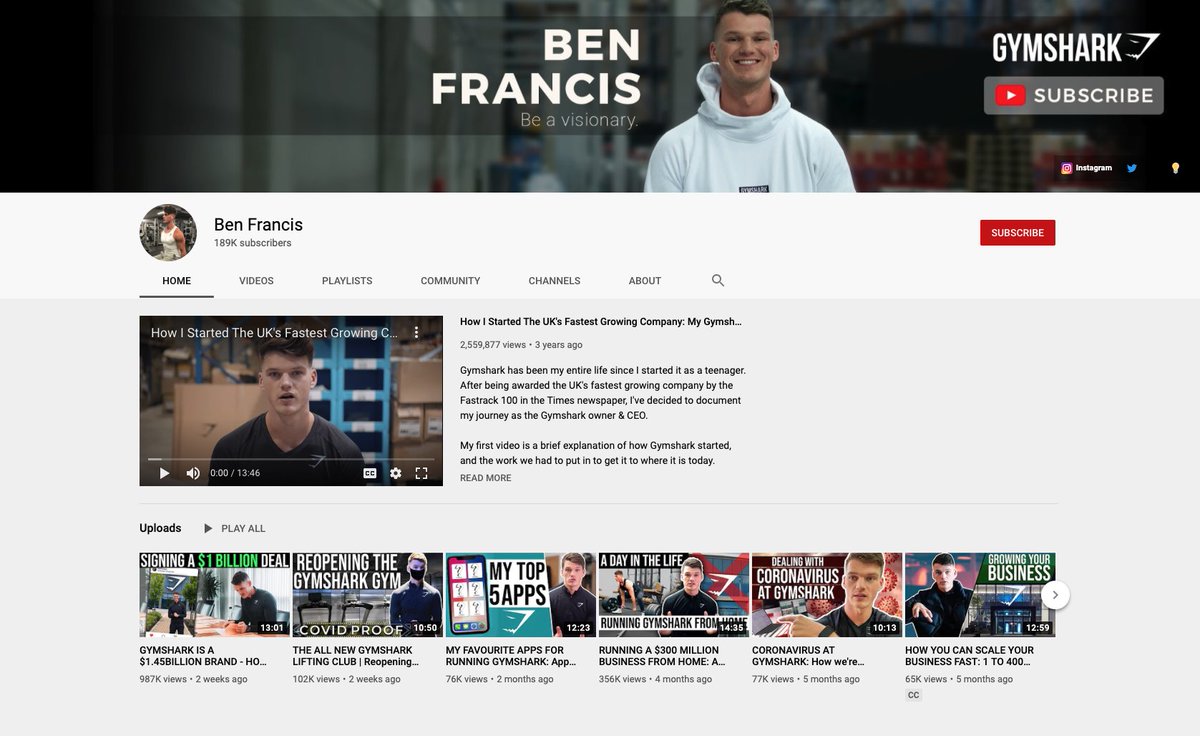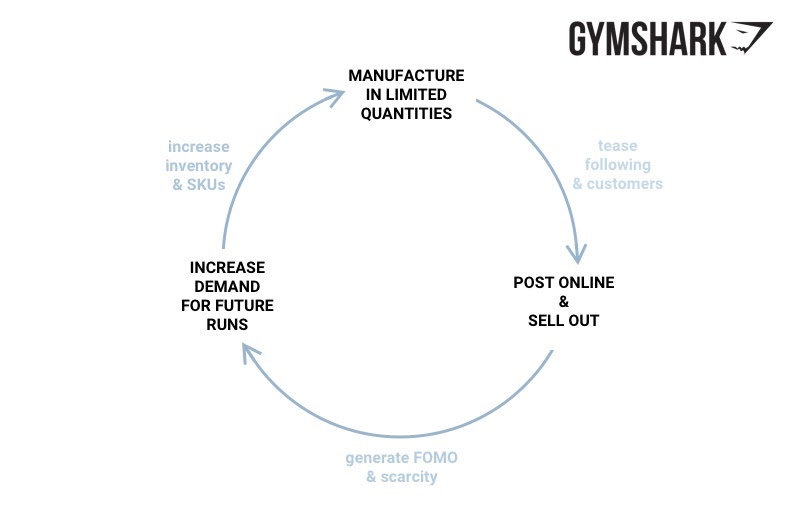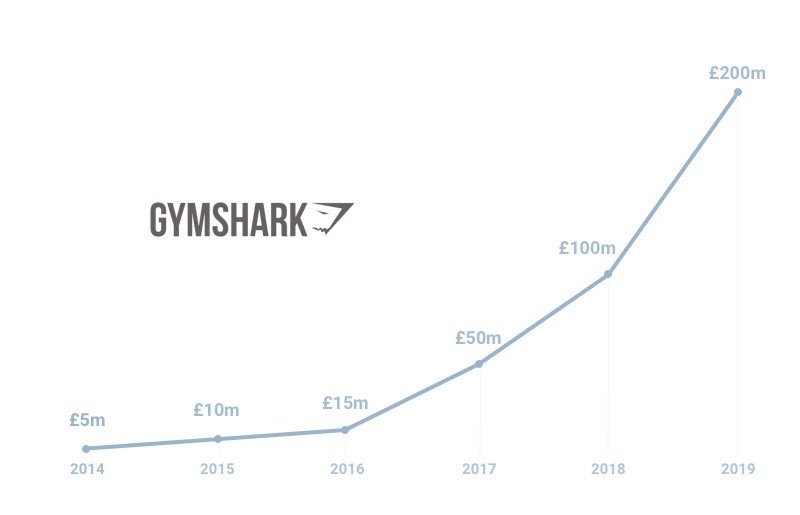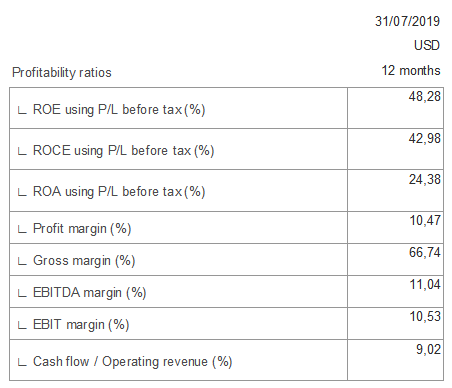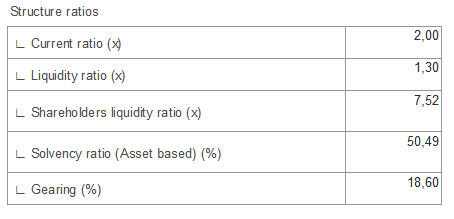Gymshark went from nothing to a billion dollar company in just 8 years with no outside capital.
How did they get here? What strategic risks are they exposing themselves now?
(Megathread)
How did they get here? What strategic risks are they exposing themselves now?
(Megathread)
This info comes from a Seedtable essay I co-wrote with @paghuo – The Rise of Gymshark. https://editions.seedtable.com/gymshark/ ">https://editions.seedtable.com/gymshark/...
The company grew their way into unicorn status by:
1) exploiting the right marketing channels
2) administering capital efficiently
3) managing their talent in an extraordinary way
But to understand how Gymshark operates you need to understand their origin story.
1) exploiting the right marketing channels
2) administering capital efficiently
3) managing their talent in an extraordinary way
But to understand how Gymshark operates you need to understand their origin story.
Gymshark was started in Birmingham in 2012 by a 19 y/o student called Ben Francis as a drop-shipping site selling health supplements to fitness fanatics.
To generate some cash, Ben decided to make his own product. He enlisted friends, got a sewing machine and got to to work.
To generate some cash, Ben decided to make his own product. He enlisted friends, got a sewing machine and got to to work.
The first Gymshark product was a bodybuilder vest for slim teens who just started going to the gym (most vests were for older, more muscular men)
Without knowing, Francis was following Paul Graham& #39;s advice: make something a small group of people really want and scale from there.
Without knowing, Francis was following Paul Graham& #39;s advice: make something a small group of people really want and scale from there.
Initial demand came from trade shows. But as they worked events, Ben started sending Gymshark products to fitness celebrities.
These influencers started raving about the company that created “this cool, quirky brand that was speaking to the community when no one else was.”
These influencers started raving about the company that created “this cool, quirky brand that was speaking to the community when no one else was.”
This accelerated growth and during the next BodyPower, Gymshark was flooded with orders.
But it didn’t stop there. When the team got back from the show, Ben put up more stock and in 30 mins they had more traffic and sales than the previous year.
It was time to scale https://abs.twimg.com/emoji/v2/... draggable="false" alt="🚀" title="Rakete" aria-label="Emoji: Rakete">
https://abs.twimg.com/emoji/v2/... draggable="false" alt="🚀" title="Rakete" aria-label="Emoji: Rakete">
But it didn’t stop there. When the team got back from the show, Ben put up more stock and in 30 mins they had more traffic and sales than the previous year.
It was time to scale
They doubled down on the strategy and began signing deals with dozens of social media celebrities and athletes from all over.
In 2014 they did £5m. By 2016 they were doing £15m – a 3x jump.
With no outside capital.
In 2014 they did £5m. By 2016 they were doing £15m – a 3x jump.
With no outside capital.
But Influencer Marketing can’t be replicated in 2020. At least not like this because it is saturated and overpriced .
What is REALLY interesting is the framework Gymshark uses for assessing growth opportunities – generating Mimetic Desire at scale.
What is REALLY interesting is the framework Gymshark uses for assessing growth opportunities – generating Mimetic Desire at scale.
Mimetic desire comes from Rene Girard’s Mimetic Theory, which @lehrjulian break downs¹ perfectly.
But to summarize: we don’t actually want the clothes, we want to be like the person we admire so we end up buying the clothes.
¹ https://julian.digital/2020/05/28/what-shopify-and-amazon-can-learn-from-mimetic-theory/">https://julian.digital/2020/05/2...
But to summarize: we don’t actually want the clothes, we want to be like the person we admire so we end up buying the clothes.
¹ https://julian.digital/2020/05/28/what-shopify-and-amazon-can-learn-from-mimetic-theory/">https://julian.digital/2020/05/2...
Gymshark’s brand AND the growth strategy that sits on top can be summarized as: a consistent search for channels that provoke mimetic desire at scale.
• Online-only
• Influencer marketing as the driver
• Pop-up shops & social media as amplifiers for influencers
• Online-only
• Influencer marketing as the driver
• Pop-up shops & social media as amplifiers for influencers
Ross Edgley uses Gymshark. Ross Edgley also swam around Great Britain in 74 days, ran a marathon pulling a Mini Cooper and did a triathlon carrying a freakin’ tree and. Damn right men want to be Ross Edgley so they will buy the clothes Ross Edgley uses.
And since influencer marketing is becoming unprofitable, the next step is making the influencers themselves.
They are starting with a Youtube channel where Ben Francis – who is a good-looking, athletic 28-year-old millionaire – vlogs about his life and running Gymshark.
They are starting with a Youtube channel where Ben Francis – who is a good-looking, athletic 28-year-old millionaire – vlogs about his life and running Gymshark.
But Growth isn& #39;t everything when you live in the world of atoms.
We’ve seen startups like Nasty Gal go up in flames because they couldn’t support the embedded growth obligations that come with VC.
But Gymshark didn’t take VC. They had no choice but to be a profitable company.
We’ve seen startups like Nasty Gal go up in flames because they couldn’t support the embedded growth obligations that come with VC.
But Gymshark didn’t take VC. They had no choice but to be a profitable company.
But how does a startup manage cash when producing products forces you to pay for stuff upfront?
You only buy inventory you know 100% you can sell. So you manufacture a fraction of what a normal company would.
If you think you might sell 100 t-shirts, then you manufacture 50.
You only buy inventory you know 100% you can sell. So you manufacture a fraction of what a normal company would.
If you think you might sell 100 t-shirts, then you manufacture 50.
The second-order consequences of manufacturing under your sales forecast is that some folks won’t be able to get the product, even if they wanted to.
This generates scarcity/FOMO, fuelling demand for the following run. So next time you do 65. Then 85. And rinse and repeat.
This generates scarcity/FOMO, fuelling demand for the following run. So next time you do 65. Then 85. And rinse and repeat.
Gymshark& #39;s flywheel allowed them to only produce what they were guaranteed to sell, generating scarcity and fuelling future demand.
• Manufacture in limited quantities
• Post online and sell out
• Generate scarcity and FOMO
• Fuel demand for new runs
• Increase batch size
• Manufacture in limited quantities
• Post online and sell out
• Generate scarcity and FOMO
• Fuel demand for new runs
• Increase batch size
I suspect this was all possible because of how Gymshark manages talent.
Talent management is key otherwise Gresham& #39;s Law for Talent will eat from the inside out. https://twitter.com/gonsanchezs/status/1251292299637776385?s=20">https://twitter.com/gonsanche...
Talent management is key otherwise Gresham& #39;s Law for Talent will eat from the inside out. https://twitter.com/gonsanchezs/status/1251292299637776385?s=20">https://twitter.com/gonsanche...
Example comes from the top, when Ben decided to bring a more experienced pair of hands to help run a capital intensive business like Gymshark.
In 2015, Sportswear industry veteran Steve Hewitt joined as managing director, before being given the chief executive title last year.
In 2015, Sportswear industry veteran Steve Hewitt joined as managing director, before being given the chief executive title last year.
Gymshark& #39;s (1) search for mimetic-desire-inducing channels, (2) profitable loop and (3) proper management meant they grew like crazy.
• £5m in 2014
• £10m in 2015
• £15m in 2016
• £50m in 2017
• £100m in 2019
• £200m in 2019
• £5m in 2014
• £10m in 2015
• £15m in 2016
• £50m in 2017
• £100m in 2019
• £200m in 2019
The funny thing is they did this in a healthy way, becoming the perfect example that not being VC-funded doesn& #39;t result in being crippled with debts.
But the shark got hungry.
Gymshark raised £200m to expand the business in Asia and North America, where they do 40% of its sales.
The “We never raised, we can do what we want” ship has sailed. With capital comes embedded growth obligations and Gymshark needs to keep the pace.
Gymshark raised £200m to expand the business in Asia and North America, where they do 40% of its sales.
The “We never raised, we can do what we want” ship has sailed. With capital comes embedded growth obligations and Gymshark needs to keep the pace.
The question is whether the online market is big enough for them to continue the pure DTC model that got them here or not.
Gymshark might be forced to abandon their niche online-only business model and go mainstream with TV ads, sponsoring NFL players and retail space.
Gymshark might be forced to abandon their niche online-only business model and go mainstream with TV ads, sponsoring NFL players and retail space.
The risk is that, at some point, Gymshark will have to move away from the gym-enthusiasts and appeal to light category buyers.
If you want to kill Nike, you have to get closer to its size and this requires lots of money upfront and a different skillset.
If you want to kill Nike, you have to get closer to its size and this requires lots of money upfront and a different skillset.
Will its high brand relevance muscled by DTC data capabilities enable loyalty at scale?
How does this set them up to be disrupted by future entrants?
If they become Nike, where will we see the next Gymshark?
Maybe we should look at what the TikTok kids are doing.
How does this set them up to be disrupted by future entrants?
If they become Nike, where will we see the next Gymshark?
Maybe we should look at what the TikTok kids are doing.

 Read on Twitter
Read on Twitter